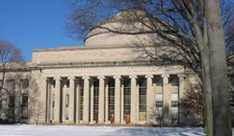
The Liability of Carbon Dioxide Storage
Regulatory Issues Controlling Carbon Capture and Storage
Project: The Liability of Carbon Dioxide Storage
Research Team: Mark de Figueiredo, Kenneth Oye, Howard Herzog, and David Reiner
Sponsors: Carbon Sequestration Initiative and Alliance for Global Sustainability
Year: 2007
Abstract:
This research examines the liability of storing CO2 in geological formations. There is a potential tortious and contractual liability exposure if stored CO2 is not fully contained by the geological formation. Using a combination of case study and survey methods, this research examines the risks confronted by CO2 storage, the legal and regulatory regimes governing these risks, and liability arrangements in other sectors where analogous risks have been confronted. Currently identifiable sources of liability include induced seismicity, groundwater contamination, harm to human health and the environment, property interests, and permanence. The risks of CO2 storage are analyzed in the context of several case studies: acid gas injection, natural gas storage, secondary oil recovery, and enhanced oil recovery. Methods for containing liability are considered in the context of regulatory analogs.
This research finds that the current public and private mechanisms that would govern CO2 storage liability do not adequately address the issue. The analysis reveals six lessons learned: (1) the successful resolution of the CO2 liability issue will require combining our understanding of physical and regulatory analogs; (2) the prospect of CO2 storage liability will affect the implementation of predictive models and incentives to monitor leakage; (3) jurisdictional differences in liability exposure could affect where storage projects are eventually sited; (4) the development of liability rules is a function of an industry’s emergence, but an industry’s emergence, in turn, may affect the content of the liability rules; (5) regulatory compliance is not always a safe harbor for liability; and (6) statutes of limitation and repose mean that private liability is not necessarily “forever”;. A new liability arrangement is advocated where the current permitting regime is amended, long-term liability is managed by a governmental CO2 Storage Corporation with backing from an industry-financed CO2 Storage Fund, compensation for tortious liability occurs through an Office of Special Masters for CO2 Storage in the U.S. Federal Court of Claims and the permanence issue is addressed on an annual ex post basis during the injection phase of CO2 storage operations and on an ex ante basis when sites are transferred to the CO2 Storage Corporation.
Publications:
de Figueiredo, M.A., H.J. Herzog, P.L. Joskow, K.A. Oye, and D.M. Reiner, Regulating Carbon Dioxide Capture and Storage, CEEPR WP-2007-003, April (2007). <PDF>
de Figueiredo, M.A., "The Liability of Carbon Dioxide Storage," M.I.T. Ph.D. Dissertation, January (2007). <PDF>
de Figueiredo, M., D. Reiner, H. Herzog, K. Oye, "The Liability of Carbon Dioxide Storage," presented at the 8th International Conference on Greenhouse Gas Control Technologies, Trondheim, Norway, June (2006). <PDF>
de Figueiredo, M.A., H.J.Herzog and D.M. Reiner, "Framing the Long-Term Liability Issue for Geologic Carbon Storage in the United States," Mitigation and Adaptation Strategies for Global Change, vol 10, pp 647-657, October (2005). <PDF>
de Figueiredo, M.A., "Property Interests and Liability of Geologic Carbon Dioxide Storage," preliminary paper, Special Report to the MIT Carbon Sequestration Initiative , September (2005). <PDF>
de Figueiredo, M.A., "The Underground Injection Control of Carbon Dioxide," Special Report to the MIT Carbon Sequestration Initiative, February (2005) <PDF>
de Figueiredo, M.A., D.M. Reiner and H.J. Herzog, "Towards a Long-Term Liability Framework for Geologic Carbon Sequestration," presented at the Second National Conference on Carbon Sequestration, Washington, DC, May 5-8 (2003). <PDF>
Reiner D.M. and H.J. Herzog, "Developing a Set of Regulatory Analogs for Carbon Sequestration," Proceedings of 6th International Conference on Greenhouse Gas Control Technologies (GHGT-6), Volume I, J. Gale and Y. Kaya (Eds.), Elsevier, pp 235-241, (2003). <PDF>